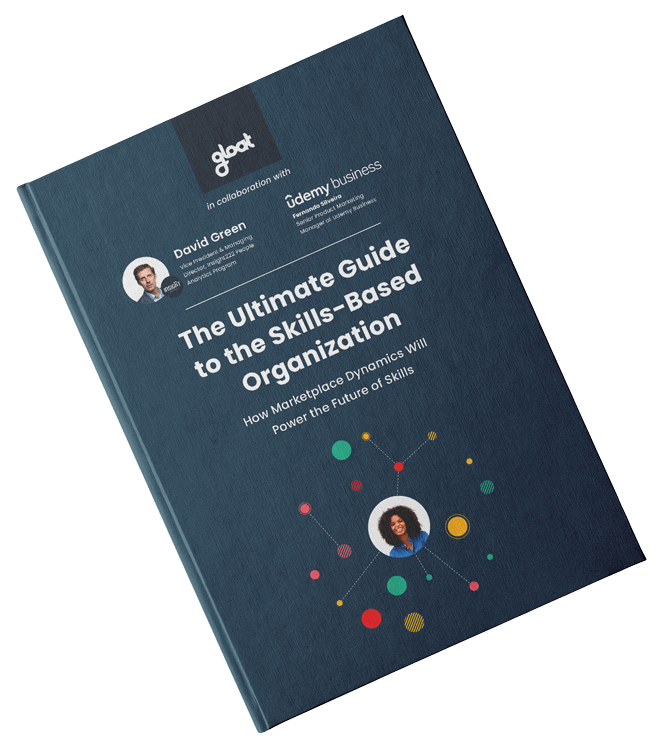4 steps leaders can take to prevent skills shortages
You can stop skill gaps from sabotaging your bottom line. Here’s how: There might be a few items on leaders’ agendas that can be problems for another day—but skills shortages aren’t one of them. According to Mckinsey, nearly 1 in 2 organizations are currently struggling with skill gaps and another 44% predict they will begin

You can stop skill gaps from sabotaging your bottom line. Here’s how:
There might be a few items on leaders’ agendas that can be problems for another day—but skills shortages aren’t one of them. According to Mckinsey, nearly 1 in 2 organizations are currently struggling with skill gaps and another 44% predict they will begin grappling with them in the years to come.
As the pace of technological innovation accelerates and consumer expectations shift, skills shortages are only likely to become more severe. By 2030, Korn Ferry estimates that these knowledge gaps may lead to a collective $8.5 trillion loss in potential annual revenue.
However, leaders don’t need to accept these dismal forecasts as part of their new reality. With the right tools and strategies, executives can address skill shortages and ensure their workforce has the knowledge needed to push their enterprises forward.
Understanding today’s skill shortage crisis
While organizations have experienced occasional skill gaps for decades, the discrepancies between the competencies businesses need and the knowledge employees have are reaching new heights. Over the past year, 75% of companies have reported difficulty recruiting qualified talent and global talent shortages are now at a 16-year high.
Pandemic-induced disruptions and aging workforces are exacerbating the scarcity of skilled workers in many countries, including the United States. Recent data from the Bureau of Labor Statistics reveals that while there are nearly 10 million job openings, the number of Americans who are unemployed hovers around 6 million. Although there are many factors that contribute to this discrepancy, it’s likely that skill gaps are holding some workers back from taking on positions that employers are eager to fill.
What causes skill shortages?
When it comes to understanding today’s ever-widening skill gaps, there are a few factors to consider. In addition to demographic shifts and post-pandemic operating model changes, the rapid pace of technological innovation is also fueling skill shortages.
Advances in AI, robotics, and other emerging technologies are happening in shorter cycles, changing the nature of the jobs that need to be done and the skills required to do them. According to the Organization for Economic Co-operation and Development, as many as 1.1 billion jobs could be transformed by technology over the next decade. As a result of this accelerated technological advancement, the half-life of skills is also shrinking, meaning that information is becoming outdated more quickly than it ever was before—from about 5 years to just 36 months.
What industries have the most skill shortages?
While organizations in all industries are likely to face skill gaps in the coming years, there are a few sectors that are particularly susceptible to these shortages. According to McKinsey research, sectors that experience high levels of disruption are likely to have the most pronounced skill needs, including financial services, technology, and telecommunications. The same report identifies data analytics, IT management, and executive management as the business areas in which upskilling and reskilling needs will be most pronounced.
4 steps leaders can take to minimize skill shortages
Businesses can’t afford to let skill gaps widen, particularly when talent landscapes are as competitive as they are today. Fortunately, there are a few steps executives can take to put a stop to skill shortages, including:
#1. Create a single source of truth for workforce skills
To address skill gaps, executives need an in-depth understanding of their workforce’s capabilities. Traditionally, this bird’s eye view has been hard to come by because skills information is typically siloed into a few different HR systems. Most taxonomies are also out of date, leading to skill-building strategies that may not address the actual needs of the organization.
Rather than settling for this subpar understanding of workforce skills, companies are harnessing AI-powered tools like Gloat’s Skills Foundation to gain visibility into all of their people’s capabilities. These systems are updated in real-time and pull from an employee’s LinkedIn profile or CV, in turn capturing the full range of knowledge and experience they’re bringing to the table.
#2. Rethink hiring strategies
As innovations emerge and priorities change, there will inevitably be times when employees need to learn new knowledge that no one in the organization possesses. In the past, external hiring was the dominant method for bridging skill gaps.
However, as talent shortages become more severe and economic turbulence continues, executives are starting to take an internal-first approach to acquire in-demand skills. Tools like Gloat’s Skills Foundation enable leaders to identify employees with adjacent skills who will make good candidates for the roles they’re trying to fill.
#3. Upgrade upskilling and reskilling strategies
Once leaders identify where skill shortages lie, it’s up to them to develop new initiatives that will help their people hone these competencies. The most effective skill-building strategies will include both content-based L&D courses as well as experiential learning opportunities that give employees a chance to put the lessons they’re learning into practice.
To ensure all workers have access to these hands-on learning opportunities, many companies are turning to talent marketplaces. The platforms generate suggestions for projects, gigs, and full-time roles based on an employee’s skills and career goals.
#4. Centralize all employee development resources
Even when leaders invest in pathways for skill-building, many employees struggle to take advantage of them because internal development resources are dispersed among a wide array of tools and systems. Since companies have an average of 70 different applications for employee development, there’s often uncertainty about where to find various skill-building resources.
Instead of letting siloes and bottlenecks hold people back, leading companies are utilizing an opportunity hub to centralize all volunteering, learning, and training resources—in turn encouraging employees to use them.
To learn more about what it takes to bridge skill gaps and future-proof your company, check out our guide to becoming a skills-based organization.





